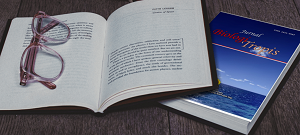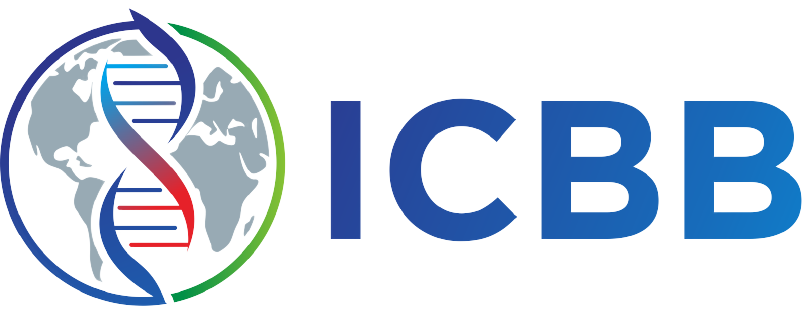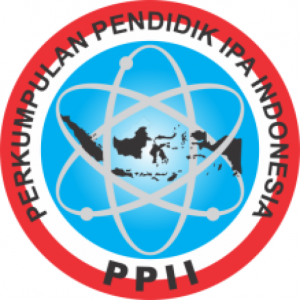Activity of Ethanol Extract and Fraction Products Leaves Manilkara kauki as Inhibitors Tyrosinase Enzyme
Authors
Dwika Febriana Zakri , Dwi Hilda Putri , Irdawati Irdawati , Marissa AngelinaDOI:
10.29303/jbt.v25i1.8295Published:
2025-03-14Issue:
Vol. 25 No. 1 (2025): Januari - MaretKeywords:
Manilkara kauki, melanin, tyrosinase enzyme.Articles
Downloads
How to Cite
Downloads
Metrics
Abstract
Currently, cosmetics made from chemical (synthetic) ingredients are in demand by the public because they can whiten the skin by inhibiting the formation of melanin, but the lack of public knowledge about the impact of excessive use has encouraged the need for natural ingredients as tyrosinase inhibitors that are safer than synthetic ingredients. This study aims to test the potential of secondary metabolite compounds in M. kauki leaves as inhibitors of tyrosinase enzyme activity by determining the IC50 value. This assay utilizes L-tyrosine and arbutin as positive control substrates, with UV-Vis spectrophotometric absorption measurements taken at a wavelength of 470 nm. The findings revealed that the buthanol fraction exhibited the highest tyrosinase enzyme inhibition, with an IC50 of 189,72 μg/mL. This was followed by the ethanol extract with an IC50 of 191,97 μg/mL, the hexane fraction at 381.50 μg/mL, and the ethyl acetate extract with an IC50 of 448.986 μg/mL. All samples displayed strong inhibitory activity, outperforming arbutin as a positive control, which had an IC50 value of 831.51 μg/mL.
References
Aprilliani, A., Suganda, A. G., & Hartati, R. (2018). Uji inhibisi Aktivitas Enzim Tirosinase Beberapa Tenis Tumbuhan Zingiberaceae. Jurnal Ilmiah Farmasi, 14(1), 46–58.
Arifianti, A. E., Anwar, E, & Nurjanah. (2017). Aktivitas Penghambatan Tirosinase Dan Antioksidan Serbuk Rumput Laut Dari Sargassum plagyphyllum Segar Dan Kering. JPHPI, 20(20), 3.
Batubara, I., Darusman, L. K., Mitsunaga, T., Rahminiwati, M., & Djauhari, E. (2010). Potency of Indonesian Medicinal Plants as Tyrosinase Inhibitor and Antioxidant Agent. Journal of Biological Sciences, 10(2), 138–144.
Chang T. S. (2012). Natural Melanogenesis Inhibitors Acting Through the Down-Regulation of Tyrosinase Activity. Materials 5(9): 1661-1685. https://doi.org/10.3390 /ma5091661
Chang, T. S. (2009). An Updated Review of Tyrosinase Inhibitors. International Journal of Molecular Sciences. 10(6). pp: 2440–2475. https://doi.org/10.3390 /ijms10062440
Furi, M., Alfatma,A., Dona, R., Fernando, A., Aryani, F., Utami, R., Muharni, S., Husnawati, Suhery, W.N., & Octaviani. M. (2022). Uji Inhibitor Enzim Tirosinase Ekstrak dan Fraksi Daun Kedabu (Sonneratia ovata Backer) secara In-Vitro. Jurnal Ilmiah Manuntung, 8(2), 201–214. https://doi.org/10.51352 /jim.v8i2.529
Garcia-molina F., Varon R., Garcia-rui P.A., Mun, J. L., Rodri J. N., Tudela, J., & Garcia-ca F. (2010). Critical Review Suicide Inactivation of the Diphenolase and Monophenolase Activities of Tyrosinase. Journal of Agricultural and Food Chemistry. 62(7):539-47. https://doi.org/10.1002 /iub.348
Hadinata, E. A., Eva Monica, & Godeliva Adriani Hendra. (2022). Eksplorasi Bahan Alam Sebagai Kosmetik Guna Pencegahan Stres Oksidatif Pada Kulit Manusia: Literature Review. SAINSBERTEK Jurnal Ilmiah Sains & Teknologi, 2(2). https://doi.org/10.33479 /sb.v2i2.120
Harborne JB., (1987). Metoda Fitokimia, Penentuan Cara Modern Menganalisa Tumbuhan. Terjemahan K. Padmawinata. (Edisi II). Bandung: Penerbit ITB.
Himawan, R. F. (2010). Kromatografi Cair Kinerja Tinggi (KCKT). Jakarta: Sagung Seto
Jayantie, D. D., Farida, Y., & Taurhesia, S. (2022). Aktivitas Antioksidan Dan Inhibisi Enzim Tirosinase Ekstrak Etanol Buah Gandaria (Bouea macrophylla Griff.) Secara In Vitro. Pharmacoscript, 5(1), 62–70. https://doi.org/10.36423 /pharmacoscript.v5i1.856
Mahmoud Il, Marzouk MS, Moharram FA, El Gindi MR, Hassan AM. (2001). Acylated Flavonol Glycosides From Eugenia jambolana Leaves. Phytochemistry; 58, 1239-1244. https://doi.org/10.1016/S0031 9422(01)00365-X
Mangurana, W. O. I., Yusnaini, Y., & Sahidin, S. (2019). Analisis LC-MS/MS (Liquid Chromatogaph Mass Spectrometry) dan Metabolit Sekunder Serta Potensi Antibakteri Ekstrak N-Heksana Spons Callyspongia aerizusa yang Diambil Pada Kondisi Tutupan Terumbu Karang Yang Berbeda di Perairan Teluk Staring. Jurnal Biologi Tropis, 19(2), 131-141. http://dx.doi.org/10.29303/
Marjoni, R. (2016). Dasar-Dasar Fitokimia. CV. Trans Info Media. Jakarta.
Muharni. 2010. Triterpenoid Lupeol dari Manggis Hutan (Garcinia bancana Miq). Jurnal Penelitian Sains. 13, 40-45.
Nafisah, M., Tukiran., Suyanto., Nurul, H. (2014). Uji Skrining Fitokimia Pada Ekstrak Heksan, Kloroform, Dan Metanol Dari Tanaman Patikan Kebo (Euphorbia hirta), Jurusan FMIPA, Prosiding Seminar Nasional Kimia Surabaya, 279- 286.
National Center for Biotechnology Information (2025). PubChem Compound Summary for CID 69624177, 1,2,3,19-Tetrahydroxy-12-ursen-28-oic acid.
Noreen, H., Semmar, N., Farman, M., & Mc Cullagh, J. S. O. (2017). Measurement of Total Phenolic Content And Antioxidant Activity Of Aerial Parts Of Medicinal Plant Coronopus didymus. Asian Pacific Journal of Tropical Medicine, 10(8), 792–801.https://doi.org/10.1016/j.apjtm.2017.07.024
Ohguchi, K., Tanaka, T., Kido, T., Baba, K., Iinuma, M., Matsumoto, K., Akao, Y., & Nozawa, Y. (2003). Effects of Hydroxystilbene Derivatives on Tyrosinase Activity. Biochemical and Biophysical Research Communications, 307(4), 861–863. https://doi.org/10.1016/s0006- 291x (03)01284-1.
Puspitasari, A. D., & Proyogo, L. S. (2017). Perbandingan Metode Ekstraksi Maserasi dan Sokletasi Terhadap Kadar Fenolik Total Ekstrak Etanol Daun Kersen (Muntingia calabura). Cendekia Eksakta, 2(1). http://dx.doi.org/10.3194/
Putri, I. A. (2023). Skrining Fitokimia dan Uji Aktivitas Antioksidan Ekstrak Etanol 70% Batang Nilam (Pogostemon cablin Benth.) dengan Metode DPPH. Indonesian Journal of Pharmaceutical Sciences and Clinical Research (IJPSCR). 1(2): 1-16
Rambitan, S. R., Manampiring, A., Kepel, B. J., Budiarso, F., & Bodhi, W. (2021). Molecular Docking Senyawa Vitexin, Ursolic Acid dan Flavonol dalam Tumbuhan Binahong (Andredera Cordifolia (Ten.) Steenis) yang Berpotensi sebagai Penghambat Pertumbuhan COVID-19. eBiomedik, 9(2).https://doi.org/10.35790/ebm.v9i2.31825
Rauf, A., Ningsi, S., Hasriani, A., & Mukhriani, M. (2020). Aktivitas Penghambatan Enzim Tirosinase Ekstrak Metanol Klika Anak Dara (Croton oblongus Burm F.). Jurnal Kesehatan, 17-24.:10.24252/kesehatan.v1i1.18220
Rivai, H., Nurdin, H., Suyani, H., & Bakhtiar, A. (2011). Karakterisasi Ekstrak Daun Dewa (Gynura pseudochina (L.)) dengan Kromatografi Cair Kinerja Tinggi. Jurnal Farmasi Indonesia, 5(3), 134-141.
Sagala, Z. & Telaumbanua, K. (2020). Formulasi, Uji Stabilitas dan Aktivitas Inhibitor Enzim Tirosinase Sediaan Krim dari Ekstrak Buah Harendong (Melastoma affine D. Don). Indоnesia Natural Research Pharmaceutical Jоurnal. 5(2), 149-173
Shraim, A. M., Ahmed, T. A., Rahman, M. M., & Hijji, Y. M. (2021). Determination Of Total Flavonoid Content By Aluminum Chloride Assay: A critical Evaluation. Food Science and Technology, 150, 111932. https://doi.org/10.1016 /j.lwt.2021.111932
Silalahi, M. (2017). Senyawa Metabolit Sekunder pada Etlingera elatior (Jack) RM Smith.
Yunita, Y. (2019). Uji Aktivitas Inhibisi Terhadap Enzim Tirosinase dari Ekstrak Etanol Daun Kemangi (Ocimum americanum L.) Secara In Vitro. Indonesia Natural Research Pharmaceutical Journal, 4(1), 38-47.
Zolghadri, S., Bahrami, A., Hassan Khan, M. T., Munoz-Munoz, J., Garcia-Molina, F., Garcia-Canovas, F., & Saboury, A. A. (2019). A Comprehensive Review on Tyrosinase Inhibitors. Journal of Enzyme Inhibition and Medicinal Chemistry, 34(1), 279–309.
License
Copyright (c) 2025 Dwika Febriana Zakri, Dwi Hilda Putri, Irdawati Irdawati, Marissa Angelina

This work is licensed under a Creative Commons Attribution 4.0 International License.

Jurnal Biologi Tropis is licensed under a Creative Commons Attribution 4.0 International License.
The copyright of the received article shall be assigned to the author as the owner of the paper. The intended copyright includes the right to publish the article in various forms (including reprints). The journal maintains the publishing rights to the published articles.
Authors are permitted to disseminate published articles by sharing the link/DOI of the article at the journal. Authors are allowed to use their articles for any legal purposes deemed necessary without written permission from the journal with an acknowledgment of initial publication to this journal.


























